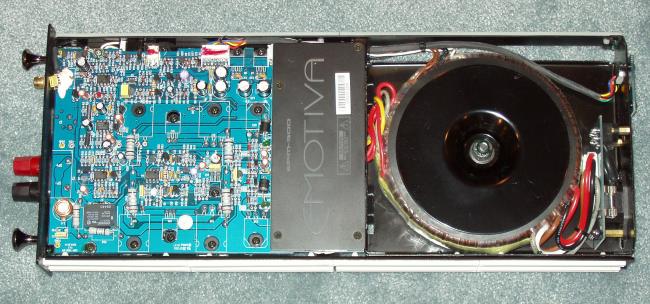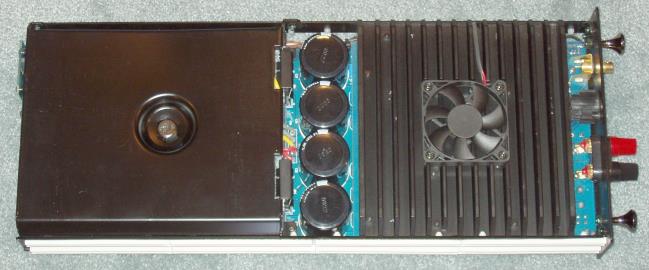|
||||||
|
Set-up In this review, I used the DMC-1 and MPS-1 in a 7.1 speaker configuration. As with other home theater equipment, configuring everything carefully is crucial in achieving the best results. Fortunately, the DMC-1 is relatively easy to set up with a menu system that is sufficiently user friendly. Every set-up command can be delivered using the remote control with the help of the on-screen display feature. If you have some experience in setting up a receiver or a surround processor in the past, you should be able to do it with the DMC-1 in a breeze. Even if this is your first SSP, its userís guide is quite easy to follow and explains everything in sufficient details. Overall, the menu system of the DMC-1 is quite logical to follow. The DMC-1 doesnít have an auto-calibration feature, so to achieve the best result, an SPL meter is needed. Below are photos of the MPS-1 module. You can see that each module is totally independent of the others, having its own toroidal transformer and power supply capacitors. There are four 50 volt 12,000 ĶF capacitors, providing 60 joules of energy storage. For the seven channels, that's 420 joules, which is a lot of energy. There is also a fan for each module, which keeps it cool during those Stallone movies.
The operation of the DMC-1 was quite smooth overall. I found the remote to be pleasant to use and relatively easy to program. The pre-programmed mode allowed me to operate most of my equipment except for the non-mainstream ones. But even if the pre-programmed mode failed, I could still program it by using its learning function. Hence, the included remote control was quite capable of replacing my other equipmentís remotes, and Iím sure it would be the case with most usersí setups. The only minor quirk I found with the DMC-1 was the occasional glitches on the OSD menu when it was passed through my Infocus SP-110 projector. These glitches didnít appear with my regular television, so my guess was there was a mismatch in frequency between the DMC-1 video output and my projector. Hence, it might just be specific to the equipment combination.
The Performance
In terms of
sound, the DMC-1 was one very smooth natural sounding processor. I don't
mean that it smoothed the sound coming out of it, but rather that
there was no trace of artificial harshness to the sound, which sometimes
plagues a few digital surround processors. The combo always delivered sound effortlessly, indicating plenty of reserve power. Never for once, even when playing the system at a rather insane level, did I feel that the MPS-1 ran out of steam. Also, the MPS-1 in general ran cool. Even when pushed rather hard, at the end of a two hour movie, its top cover was only warm and never became too hot to touch. The presence of cooling fans in its amplifier modules would make some people worry due to the potential noise they might produce. However, during my evaluation, as hard as I tried I couldnít hear when (if) the fans were in operation.
|
||||||





